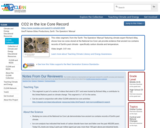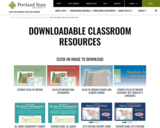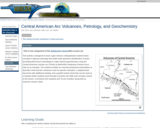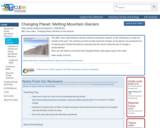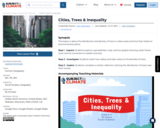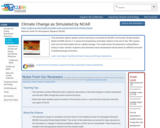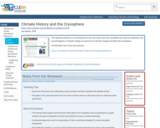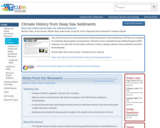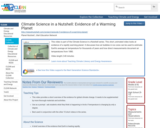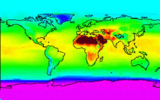SYNOPSIS: This lesson is about the distribution and density of trees in urban areas and how that relates to environmental justice.
SCIENTIST NOTES: This lesson uses data from peer-reviewed research that breaks down the forest cover in cities as it correlates to income. The evidence is clear and convincing that more affluent neighborhoods have more tree cover, which has a documented benefit on the residents. All external links are scientifically sound, and this lesson has pass our science quality assessment.
POSITIVES:
-This is an engaging lesson because it is so personal. Students will think about tree cover where they live and how that relates to demographic data.
-Students will practice their data analysis skills.
ADDITIONAL PREREQUISITES:
-It is necessary to share the Student Slideshow with your students and give them editing access before beginning the lesson. All students will be writing in the same slideshow.
-The videos list the benefits of trees pretty quickly. It might be hard for students to type fast enough to keep up. You could play the videos at 0.9 speed or replay parts of the videos as necessary.
-The following is a list of benefits of trees. Students will create a similar list while they are watching the two videos outlining the benefits of trees.
-Reduce nearby outside temperatures
-Reduce amount of energy used for heating and cooling buildings
-Absorb carbon dioxide, thus mitigating climate change
-Filter urban pollutants and fine particulates
-Provide habitat, food, and protection to plants and animals
-Provide food for people
-Increase biodiversity
-Provide wood that can be used at the end of a tree’s life
-Improve physical and mental health of people
-Increase property values
-Create oxygen
-Provide shade for people and animals
-Control stormwater runoff, protecting water quality and reducing the need for water treatment
-Protect against mudslides
-Help prevent floods
-Improve air quality
-Increase attention spans and decrease stress levels in people
-Improve health outcomes in hospital patients
DIFFERENTIATION:
-Teachers can use the glossary at the end of the slideshow at any point throughout the lesson to help students understand vocabulary.
-The spreadsheet and the graph on slide 11 might be tricky. Encourage your students to turn and talk to one another for help.
-Many students will not have a good understanding of Celsius. Easy reminder: Multiply the temperature in Celsius by 1.8 to get degrees Fahrenheit. Example: 2.5°C x 1.8 = 4.5°F (The temperature difference between poorest and richest census blocks in Milwaukee, Wisconsin.)

